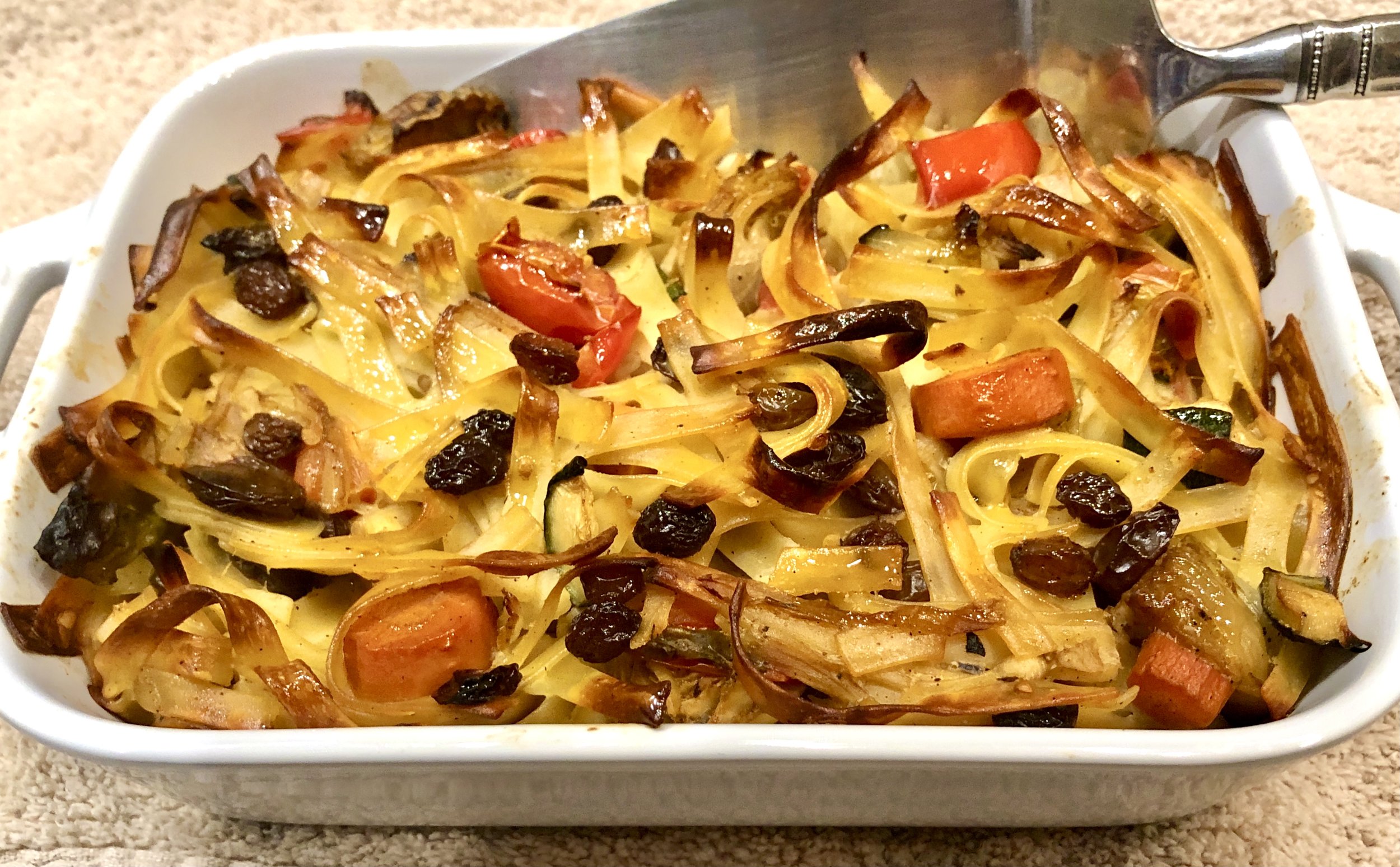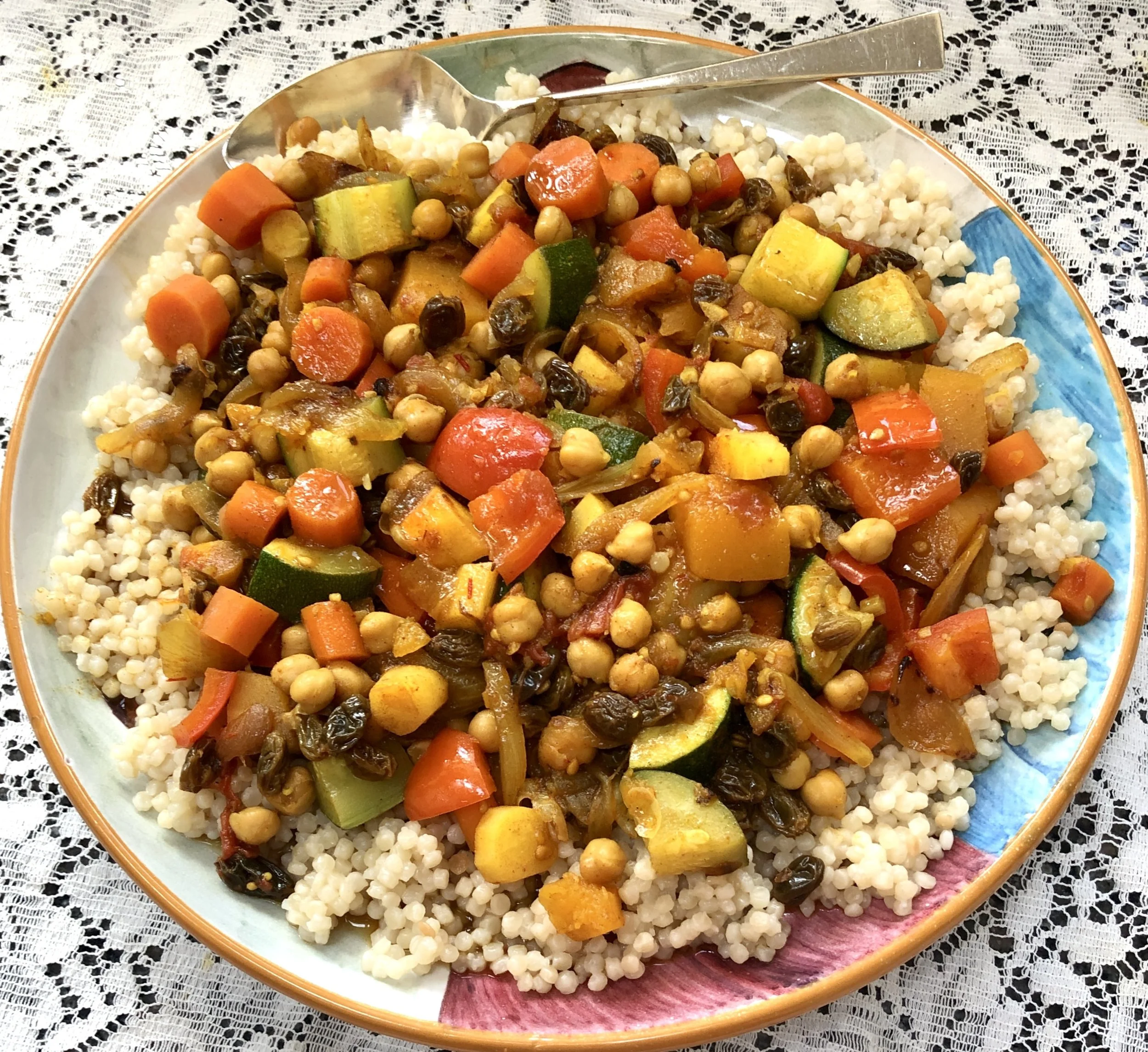Back in September I posted a recipe for a dish (Couscous with Seven Vegetables) that is traditional on Rosh Hashanah among the Jews of North Africa. We love the dish so much that I made it several times, changing the spices a bit each time. Then, one time, I decided to use the same vegetables and seasonings but instead of serving them over couscous, mix them into a kugel.
It worked perfectly!
Of course the texture of kugel vs braised vegetables over couscous is quite different. But the flavors are reminiscent of each other and just as delicious, either way.
This is a good side dish for Thanksgiving. First, it goes so well with turkey. It’s a good choice for any vegetarians who might be at your table. and also, you can make it in advance
Moroccan-Spiced Vegetable Kugel
2 tablespoons olive oil
1 small onion, sliced
1 clove garlic, finely chopped
1/2 teaspoon chopped fresh ginger
1 carrot, peeled and cut into 1/2-inch slices
1 medium tomato, cut into chunks
1 small parsnip, peeled and cut in 1/2-inch slices, optional
1/2 cup cut up bite sized butternut squash
1/2 teaspoon ras al hanout (or use 1/4 teaspoon harissa plus 1/8 teaspoon each of ground ginger, turmeric and cinnamon)
3/4 cup vegetable stock
1 cup diced zucchini
1/4 red bell pepper, cut into bite sized chunks
1/2 cup raisins
1/2 cup canned chickpeas, rinsed and drained
Salt to taste
12 ounces egg noodles
3 eggs
Preheat the oven to 375F. Heat the olive oil in sautepan over medium heat. Add the onion and cook, stirring often, for about 4 minutes or until softened and beginning to brown. Add the garlic and ginger and cook for a minute. Add the carrot, tomato, parsnip and squash and stir the ingredients. Stir in the ras al hanout. Add the stock, bring to a boil, reduce the heat to medium low and cook for about 15 minutes. Add the zucchini, bell pepper, raisins and chickpeas. Cook for about 10 minutes more, or until vegetables are tender. Add salt to taste. Cook the noodles according to the manufacturer’s directions. Spoon the vegetables and pan fluids into the noodles and mix to distribute the ingredients evenly. Beat the eggs and mix them in. Place inside a baking dish and bake for about 35-40 minutes or until the top is crispy.
Makes 4 dinner servings, 8 side dish servings


